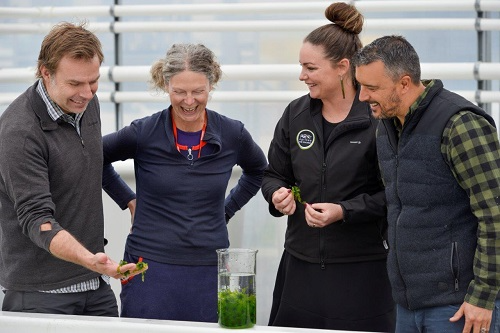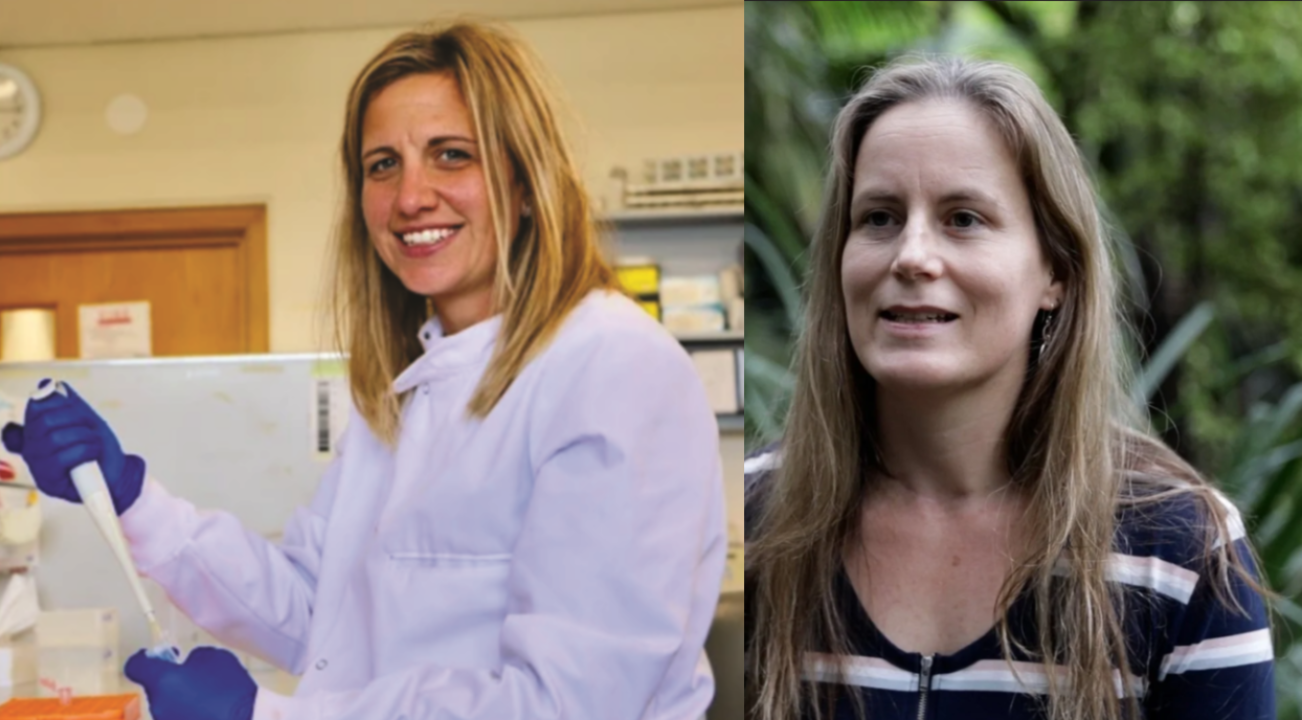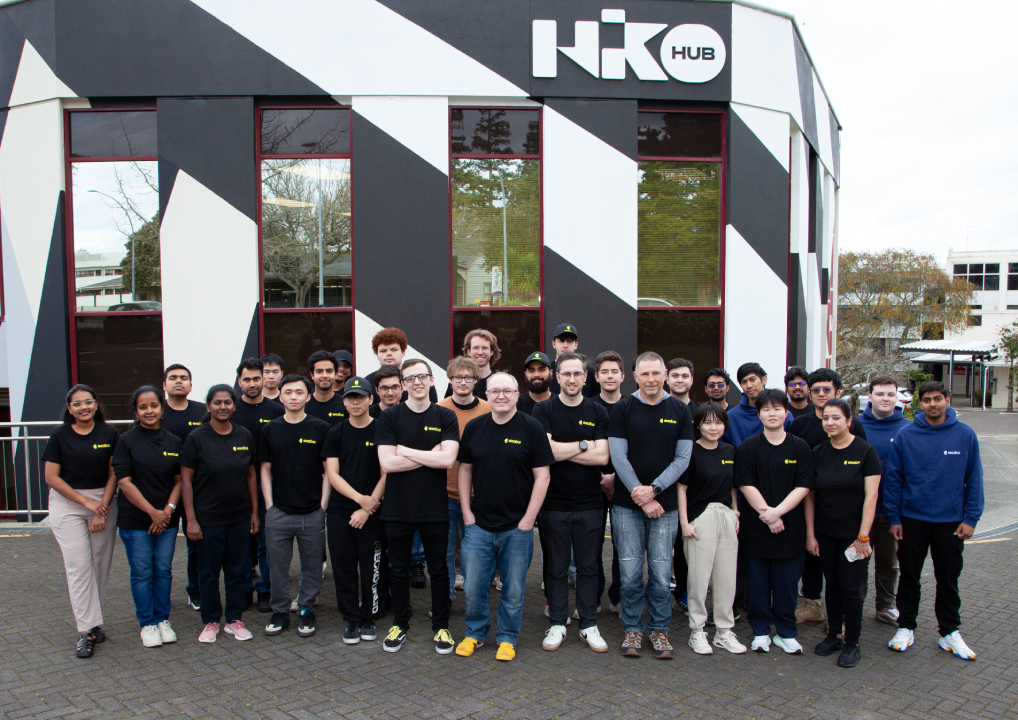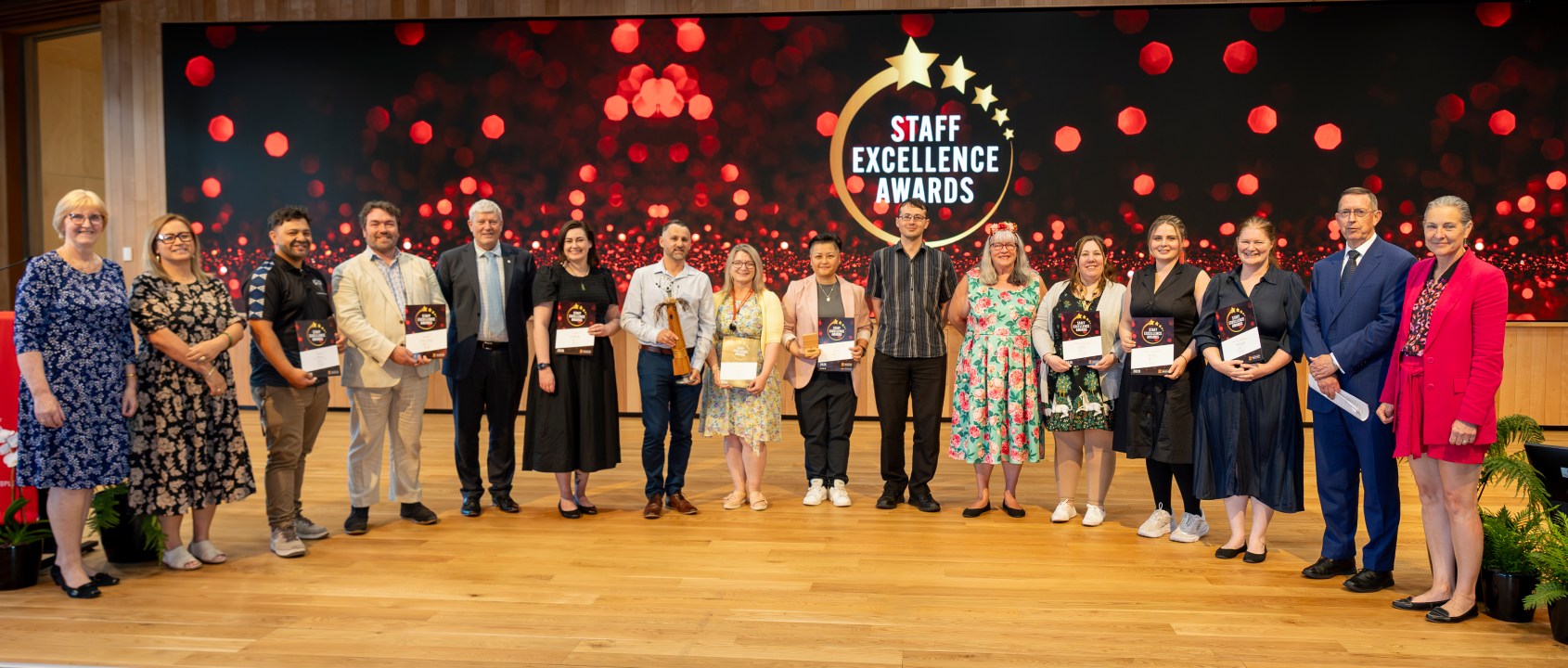The University of Waikato in partnership with AgriSea, a Paeroa based seaweed innovation company, have received $697,000 in funding from the Ministry of Primary Industries towards a $995,000 pilot project at Kopu, near Thames.

Dr Chris Glasson and Dr Marie Magnusson, University of Waikato; Clare Bradley and Tane Bradley, AgriSea
Sea Lettuce, or Ulva, already present in the Firth of Thames, will be grown in tanks at the Kopu Marine Precinct, adjoining the Waihou River estuary, the Ulva used to feed on nitrogen and phosphorus present in water drawn from the estuary.
University of Waikato’s Dr Marie Magnusson says runoff from land-based activities leads to an increase in nitrogen and phosphorus in our waterways which, when left unchecked, impacts seriously on water quality.
The nutrients are a food source for Ulva which, once grown, can be harvested, and turned into high value products for food and nutritional supplements and the agriculture and horticulture industries, a business AgriSea is already a leader in.
“The same properties that allow Ulva to form blooms in summer around our harbours including high rates of nutrient uptake and biomass growth make it really good for use in bioremediation projects like this one,” says Dr Magnusson. “Ulva also contains lots of soluble fibre that are interesting from a products development perspective, so it is a promising aquaculture target in its own right as well, not only for its potential bioremediation capacity.”
In addition to the SFF Futures funding, AgriSea is contributing $108,000 and the Agricultural and Marketing Research and Development Trust (AGMARDT) is investing $150,000. Thames-Coromandel District Council is gifting the land lease for the project term worth $40,000, with support from Ngāti Maru and Ngāti Hako. Hauraki District Council and Te Waka are also assisting with the consent process.
The 2-year pilot will see three trial tanks established drawing water from the Waihou River estuary. It is estimated when scaled up a plant of this type could produce up to 50 tonnes of dry Ulva per hectare and remove 2.7 tonnes of nitrogen, or the equivalent to 12 tonnes of nitrate, per hectare, per year.
While New Zealand doesn’t have a nitrogen trading scheme yet, if one was introduced the biomass produced in one year from one hectare of ponds would be worth NZ$82,000 in nitrogen credits, based on international values for nitrogen trading.
Bioremediation plants are already being used internationally and Dr Magnusson previously worked in a project for Australian based Pacific Bio, which owns and operates a bioremediation plant in conjunction with a prawn farm in Queensland, and she said globally the technology has proven its worth.
“This technology is already in use internationally and has been proven for point source discharges, e.g. in land-based prawn and abalone farms, but this will be the first time the concept is tested with a target of cleaning up nutrients from diffuse sources. It is very exciting for both New Zealand’s growing seaweed industry and for improving our water quality,” says Dr Magnusson.
This research aligns with the following United Nations Sustainable Development Goals:




